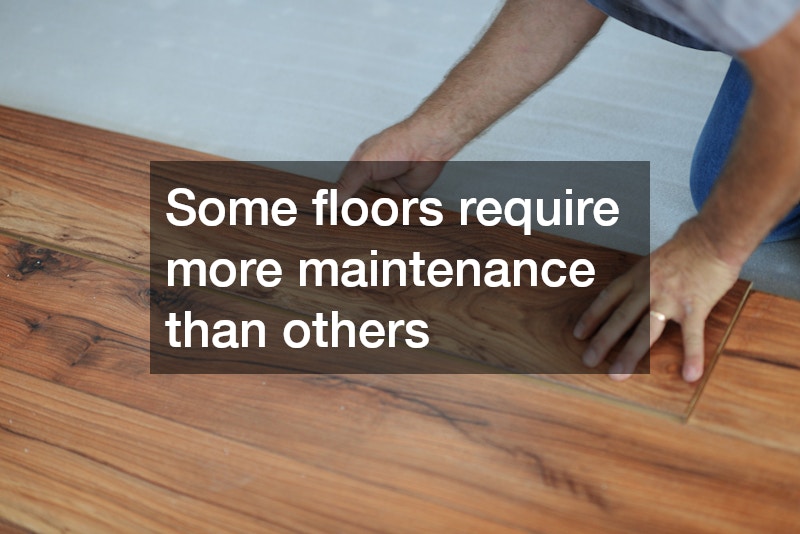Selecting the right flooring for your home goes beyond simply picking a color or pattern you like. Flooring is one of the most significant investments you make in your home, affecting both its aesthetics and functionality. Your choice should reflect your lifestyle, accommodate your daily routines, and stand up to wear and tear over time. With so many options available, it can feel overwhelming, but understanding your needs and exploring different materials can make the decision easier. Visiting trusted flooring stores can also provide hands-on experience and expert advice to help you make the best choice.
Assess Your Daily Lifestyle Needs
The first step in choosing flooring is to consider how you and your family live in your home. For example, if you have pets, hardwood floors may scratch easily, while luxury vinyl or tile can handle claws and spills with minimal damage.
Similarly, if you have young children, you may want flooring that is easy to clean, water-resistant, and safe for play. On the other hand, if your home is mainly used for entertaining or hosting guests, you might prioritize flooring with a polished and elegant look, such as engineered wood or high-quality laminate.
Visiting local flooring stores allows you to see different samples up close. You can touch the textures, compare finishes, and get a sense of durability, which is often hard to gauge from online images alone. Store professionals can also provide guidance on which materials suit specific lifestyle factors like foot traffic, moisture exposure, and maintenance needs.
Understand the Durability of Materials
Durability is a crucial factor for homeowners who want their flooring to last for years. Hardwood floors offer timeless beauty, but they can be prone to dents and scratches. Laminate flooring is budget-friendly and resists scratches, but it may not handle moisture as well as vinyl or tile. Tile and stone floors are highly durable and easy to clean, but they can be cold underfoot and sometimes slippery.
When you visit flooring stores, you can ask about the long-term performance of each material. Many stores offer samples or even demonstration areas where you can see how resistant different flooring options are to impacts, spills, and everyday wear. Understanding the life expectancy of your chosen material will help you align your flooring choice with your lifestyle and long-term home goals.
Consider Maintenance and Cleaning
Your daily routine should heavily influence your flooring choice. Some floors require more maintenance than others. For instance, hardwood needs periodic refinishing and special cleaners to maintain its shine, while vinyl or laminate may only require sweeping and occasional mopping. Tile is easy to clean, but grout lines can accumulate dirt and require scrubbing.
By exploring flooring stores, you can see which materials fit your preferred level of maintenance. Store staff can provide tips for care and upkeep, helping you select flooring that complements the time and effort you are willing to invest. If you prefer low-maintenance flooring, options like luxury vinyl plank or high-quality laminate might be the best fit for your home.
Factor in Aesthetics and Home Design
While functionality is critical, your flooring should also enhance your home’s overall design. Consider the style, color, and texture that align with your interior decor. Lighter shades can make a space feel larger and airier, while darker tones add warmth and richness. Patterned tiles or herringbone wood floors can become a statement piece in living rooms or kitchens.
Flooring stores often display complete room setups to show how different materials and colors look in a real environment. This can be invaluable for visualizing how your chosen flooring will complement furniture, paint colors, and lighting. Taking photos of your room or bringing inspiration images to the store can help experts provide tailored recommendations.
Evaluate Budget and Long-Term Investment
Cost is always a factor, but it’s important to view flooring as a long-term investment. Hardwood floors might have a higher upfront cost but can increase home value and last for decades if properly maintained. Laminate and vinyl options are generally more affordable but may need replacing sooner. Tile can offer a mid-range solution that balances durability and cost.
Visiting multiple flooring stores allows you to compare prices, warranties, and financing options. Many stores also offer package deals that include installation, which can save money and ensure the flooring is installed correctly. Comparing options across different retailers helps you make an informed choice that fits both your budget and lifestyle needs.
Seek Expert Guidance
Even after researching materials online, consulting professionals can make a significant difference. Flooring experts can answer questions about moisture resistance, underlayment requirements, and suitability for pets or children. They can also provide installation tips and maintenance advice to prolong the life of your floors.
When visiting flooring stores, don’t hesitate to ask for demonstrations or to see physical samples. Expert guidance combined with hands-on experience helps you feel confident in your choice and ensures that your flooring matches your lifestyle perfectly.
Choosing the right flooring is a blend of understanding your lifestyle, evaluating materials, and considering design and budget. By assessing your daily routines, the durability of materials, maintenance requirements, and aesthetic goals, you can select flooring that not only enhances your home’s appearance but also fits your practical needs. Visiting reputable flooring stores gives you the opportunity to see and feel options firsthand while benefiting from expert advice. Whether you prefer hardwood, tile, laminate, or vinyl, taking the time to explore your options ensures your flooring will serve your home beautifully for years to come.





